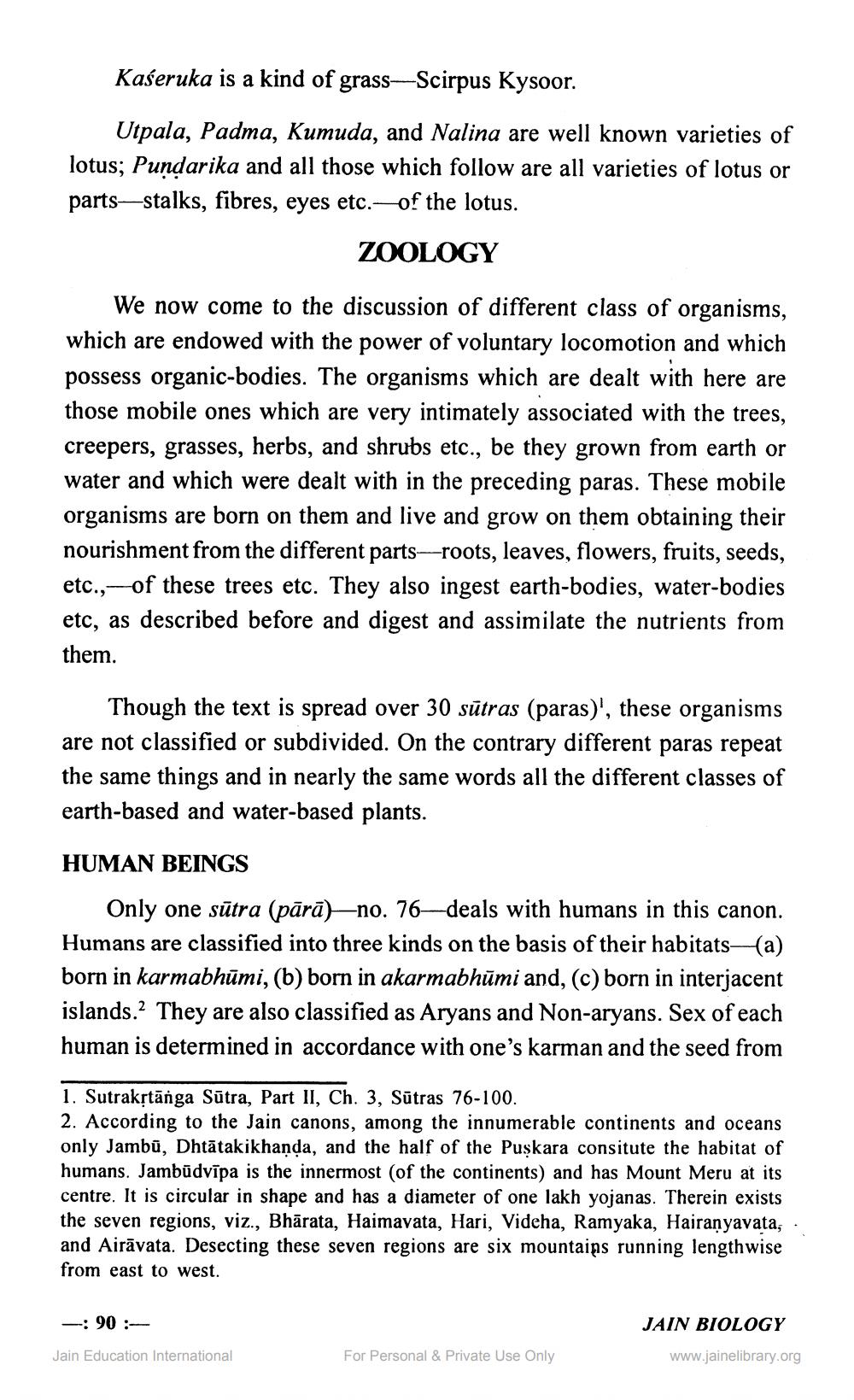________________
Kaśeruka is a kind of grass-Scirpus Kysoor.
Utpala, Padma, Kumuda, and Nalina are well known varieties of lotus; Pundarika and all those which follow are all varieties of lotus or parts—stalks, fibres, eyes etc.—of the lotus.
ZOOLOGY
We now come to the discussion of different class of organisms, which are endowed with the power of voluntary locomotion and which possess organic-bodies. The organisms which are dealt with here are those mobile ones which are very intimately associated with the trees, creepers, grasses, herbs, and shrubs etc., be they grown from earth or water and which were dealt with in the preceding paras. These mobile organisms are born on them and live and grow on them obtaining their nourishment from the different parts—roots, leaves, flowers, fruits, seeds, etc.,-of these trees etc. They also ingest earth-bodies, water-bodies etc, as described before and digest and assimilate the nutrients from them.
Though the text is spread over 30 sūtras (paras)', these organisms are not classified or subdivided. On the contrary different paras repeat the same things and in nearly the same words all the different classes of earth-based and water-based plants.
HUMAN BEINGS
Only one sūtra (pārā)no. 76/deals with humans in this canon. Humans are classified into three kinds on the basis of their habitats—a) born in karmabhūmi, (b) born in akarmabhūmi and, (c) born in interjacent islands. They are also classified as Aryans and Non-aryans. Sex of each human is determined in accordance with one's karman and the seed from
1. Sutrakstānga Sūtra, Part II, Ch. 3, Sūtras 76-100. 2. According to the Jain canons, among the innumerable continents and oceans only Jambū, Dhtātakikhanda, and the half of the Puskara consitute the habitat of humans. Jambūdvīpa is the innermost of the continents) and has Mount Meru at its centre. It is circular in shape and has a diameter of one lakh yojanas. Therein exists the seven regions, viz., Bhārata, Haimavata, Hari, Videha, Ramyaka, Hairanyavata, and Airāvata. Desecting these seven regions are six mountains running lengthwise from east to west.
-
90
JAIN BIOLOGY
Jain Education International
For Personal & Private Use Only
www.jainelibrary.org




